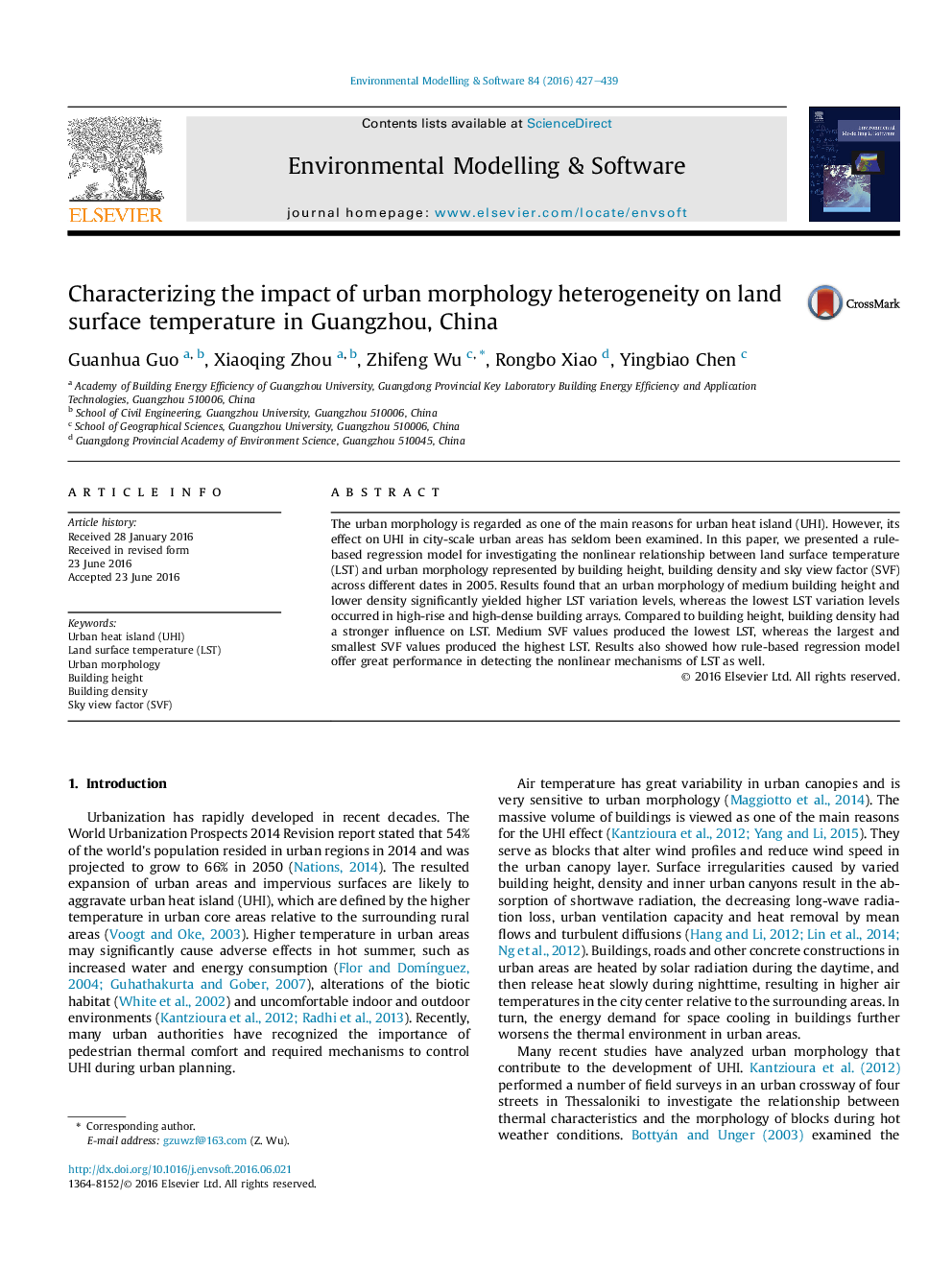| Article ID | Journal | Published Year | Pages | File Type |
|---|---|---|---|---|
| 6962375 | Environmental Modelling & Software | 2016 | 13 Pages |
Abstract
The urban morphology is regarded as one of the main reasons for urban heat island (UHI). However, its effect on UHI in city-scale urban areas has seldom been examined. In this paper, we presented a rule-based regression model for investigating the nonlinear relationship between land surface temperature (LST) and urban morphology represented by building height, building density and sky view factor (SVF) across different dates in 2005. Results found that an urban morphology of medium building height and lower density significantly yielded higher LST variation levels, whereas the lowest LST variation levels occurred in high-rise and high-dense building arrays. Compared to building height, building density had a stronger influence on LST. Medium SVF values produced the lowest LST, whereas the largest and smallest SVF values produced the highest LST. Results also showed how rule-based regression model offer great performance in detecting the nonlinear mechanisms of LST as well.
Keywords
Related Topics
Physical Sciences and Engineering
Computer Science
Software
Authors
Guanhua Guo, Xiaoqing Zhou, Zhifeng Wu, Rongbo Xiao, Yingbiao Chen,
